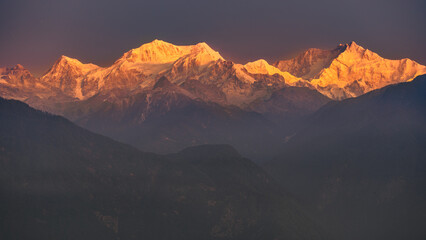
Kanchanjunga
Because of its remote location in Nepal and the difficulty involved in accessing it from India, this region is not much explored therefore, retaining much of its pristine beauty. Kanchanjunga literally meaning “five treasures of Snow” is home to a diverse flora and fauna and some of them are unique to the area including the “Dzo-nga” – a type of yeti that dwells in the Himalayan region. A British geological expedition in 1925 is said to have spotted a bipedal creature which the local referred to as “Dzo-gna”.
For generation, there have been legends recounted by the local inhabitants of the area surrounding Kanchanjunga – both in Nepal and Sikkim, India, that there is a valley of immortality hidden on its slopes. The original inhabitants of this area are Limbu people, Lepcha People and the Tibetan Buddhist people are well aware of these legends.
Treks in this regions can be customized and tailor made depending on the number of days available on the either side of the border - Nepal or Sikkim, India.
In Nepal:
The starting points can either be Taplejung, Tumlingtar or with a flight to Biratnagar and a drive to Doban. The trail follows the Tamur River to Sinwa, Amjilasa to Lhonak to visit the North Base Camp at Pangpema on the Kanchanjunga Glacier. The trail retraces back to Gungsa to cross Marijin La into Tseram to visit the south Base Camp at the Yalung Glacier on the other side. The return leg is via Yamphudin to Bhadrapur for a flight back to Kathmandu.
In Sikkim, India:
Starts from Gangtok. Trek to Ghoecha La winds through beautiful villages, Buddhist monasteries and friendly locals along the way sporting huge smiles as they pass you by through dense forests and picturesque meadows and enchanting passes. A detour to Samiti Lake offers amaging reflection of Mt. Pandim on its serene waters which is at the best in the morning. Ghoecha La pass at it stands abreast the huge southeast face of Kanchanjunga and other peaks are the highlight of the expedition. The pass used to serve as the base camp for aspiring climbers from the Indian side which is now off limits due to government regulation.


